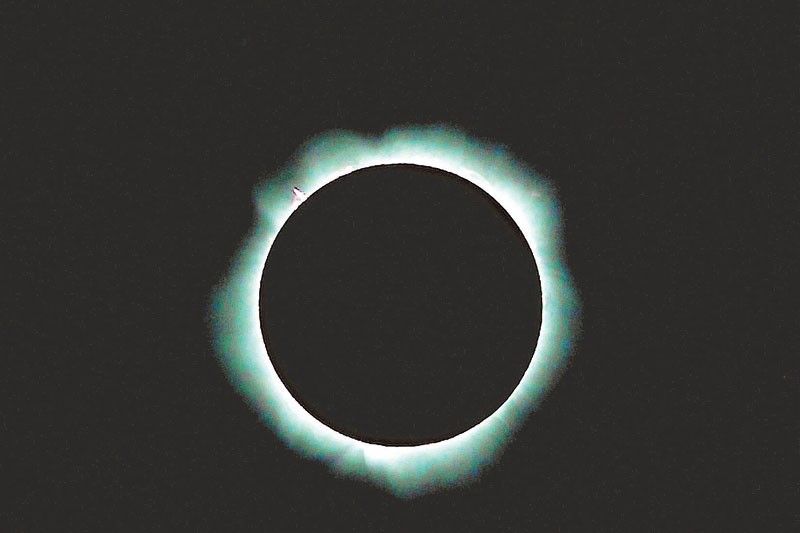Philippines experiences partial solar eclipse

MANILA, Philippines — A partial solar eclipse was visible in the country yesterday, according to the Philippine Atmospheric, Geophysical and Astronomical Services Administration (PAGASA).
At a press conference, weather specialist Mario Raymundo said the moon passed in front of the sun, resulting in a hybrid solar eclipse in Western Australia, East Timor and Eastern Indonesia.
“The Philippines experienced a partial solar eclipse. This was the first of the two solar eclipses in 2023. It is called hybrid but the totality did not pass the country,” he said.
Raymundo, who also heads the PAGASA Astronomical Observation and Time Service Unit, noted that the partial solar eclipse started at 11:44 a.m., with the maximum eclipse occurring at 12:55 p.m. and ended at 2:04 p.m.
“The entire Philippines will be able to see the partial solar eclipse, as well as Southeast Asia, the East Indies, Australia, Solomon Islands, Vanuatu, Papua New Guinea, and New Zealand,” Raymundo said.
He added that the partial solar eclipse was visible in Manila, Basco, Batanes, Palawan, Molugan in El Salvador City in Misamis Oriental, Surigao del Norte, and Balut Island, Sarangani. It was also visible in the cities of Laoag, Tuguegarao, Baguio, Dagupan, Legazpi, Tacloban, Cebu and General Santos.
“It will be more than five years before the Philippines sees another one as the next partial solar eclipse will take place on July 22, 2028,” Raymundo said. He noted that the recent partial solar eclipse to pass through the Philippines was on June 21, 2020.
To observe a solar eclipse, Raymundo advised the public to use safe solar viewing equipment such as a safe handheld solar viewer.
“Be aware that eclipse glasses are not conventional sunglasses, regular sunglasses, regardless of how dark they are, should not be used to observe the sun.”
The state agency said the eclipse produced a variety of events for observers in various locations along its path.
“At the beginning, people in the path of the eclipse may see a partial solar eclipse, an annular solar eclipse, or a brief ring of fire. Then, during the hybrid solar eclipse’s middle phase, they may see a total solar eclipse, after which it will change back to an annular solar eclipse, then to a partial solar eclipse, before the eclipse ends,” PAGASA added.
- Latest
- Trending


























